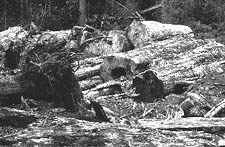Lightning seeds
 scientists in Australia have recently developed a revolutionary new system that could reduce the country's greenhouse gas emissions by as much as 10 per cent. The system, the developers claim, converts tree and wood residues into electricity. Wood, the source of renewable energy for this system, is derived from residues produced by sawmills and loggers, such as branches, tree-stumps, roots, slabs and edgings, which are either burnt or often left to rot.
scientists in Australia have recently developed a revolutionary new system that could reduce the country's greenhouse gas emissions by as much as 10 per cent. The system, the developers claim, converts tree and wood residues into electricity. Wood, the source of renewable energy for this system, is derived from residues produced by sawmills and loggers, such as branches, tree-stumps, roots, slabs and edgings, which are either burnt or often left to rot.
The system, using chips made from these residues, can produce anywhere between 30 and 200 kilowatts (kw) of electricity. Because an average household requires about 40 kw hours of electricity a day, the power generatred by the system is sufficient to sustain small towns, farms or even small factories enabling them to acquire an alternative power source much cheaper than coal.
"We do not have enough wood to replace coal, but we could reduce emissions by burning the residues instead of more fossil fuels,' said Paul Fung, chemical engineer at the Australian government's division of forestry and forest products, which was responsible for developing the unique system.
The system, designed to match the efficiency of any modern, conventional power plant, uses a gasifier that burns wood residues and thinnings to drive a microturbine. The system operates in a simple three-step process: the wood residues are first collected from the forest floor by harvesting machines that grab branches and other forest detritus and put them in chippers. The chips are then fed into the gasifier which subsequently burns and converts the chips into a combustible gas containing carbon monoxide, hydrogen and various other volatile compounds. This gas then drives the microturbine.
Gasifiers and microturbines may already exist in one form or another, but what is unique about this device is its increased efficiency and the fact that it would be completely automated. "We wanted to design a system that only needs the press of a button to start or stop,' Fung said.
The prototype gasifier that Fung has developed is expected to be priced at several thousand us dollars when it is marketed commercially, possibly within the next five years. One of the key advantages the system enjoys is that it produces energy from wood residue which is markedly cheaper than coal. Furthermore, Fung points out that using the wood residues cleans up the forest floor and significantly reduces chances of forest fires (The Age , January 7, 1998).
